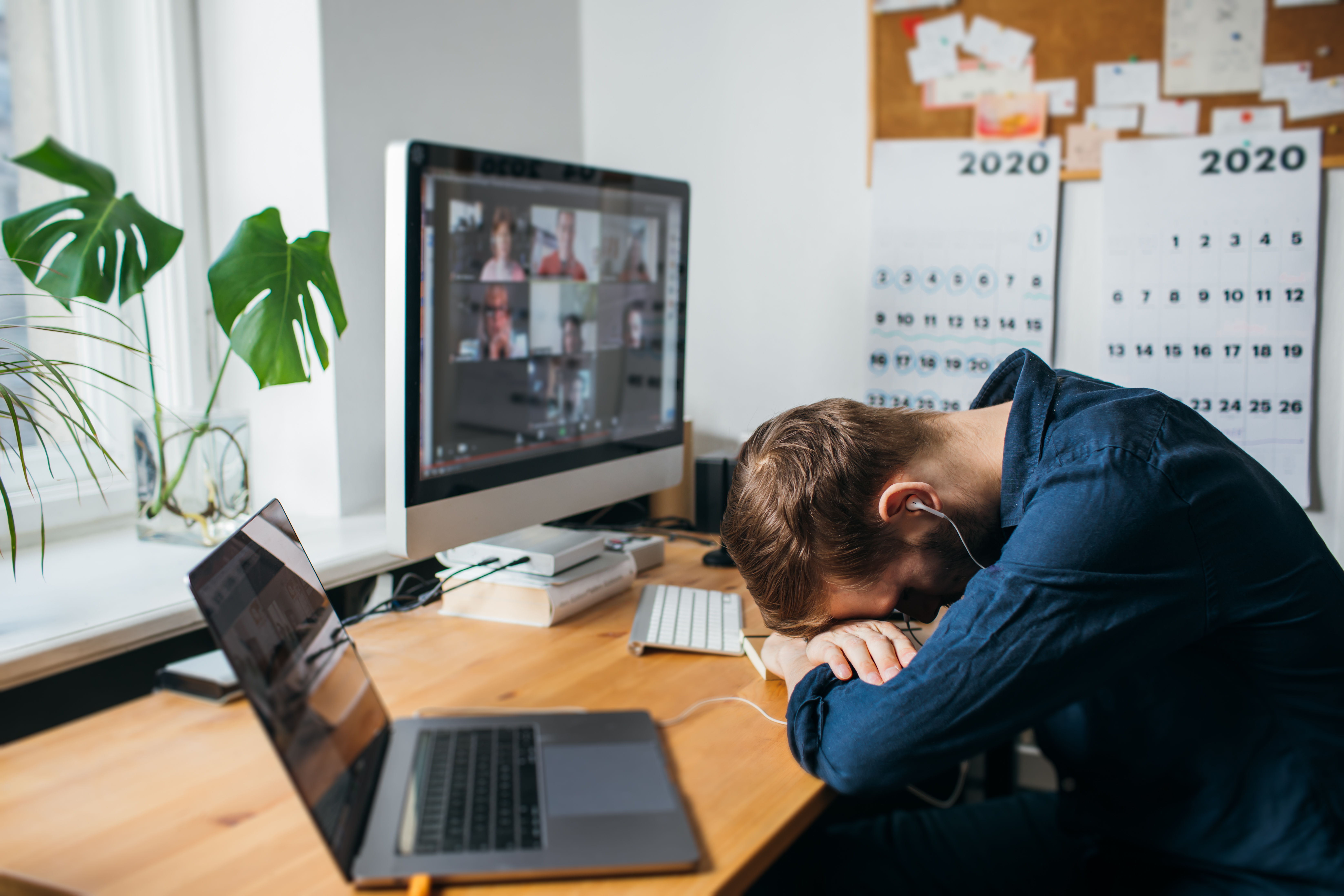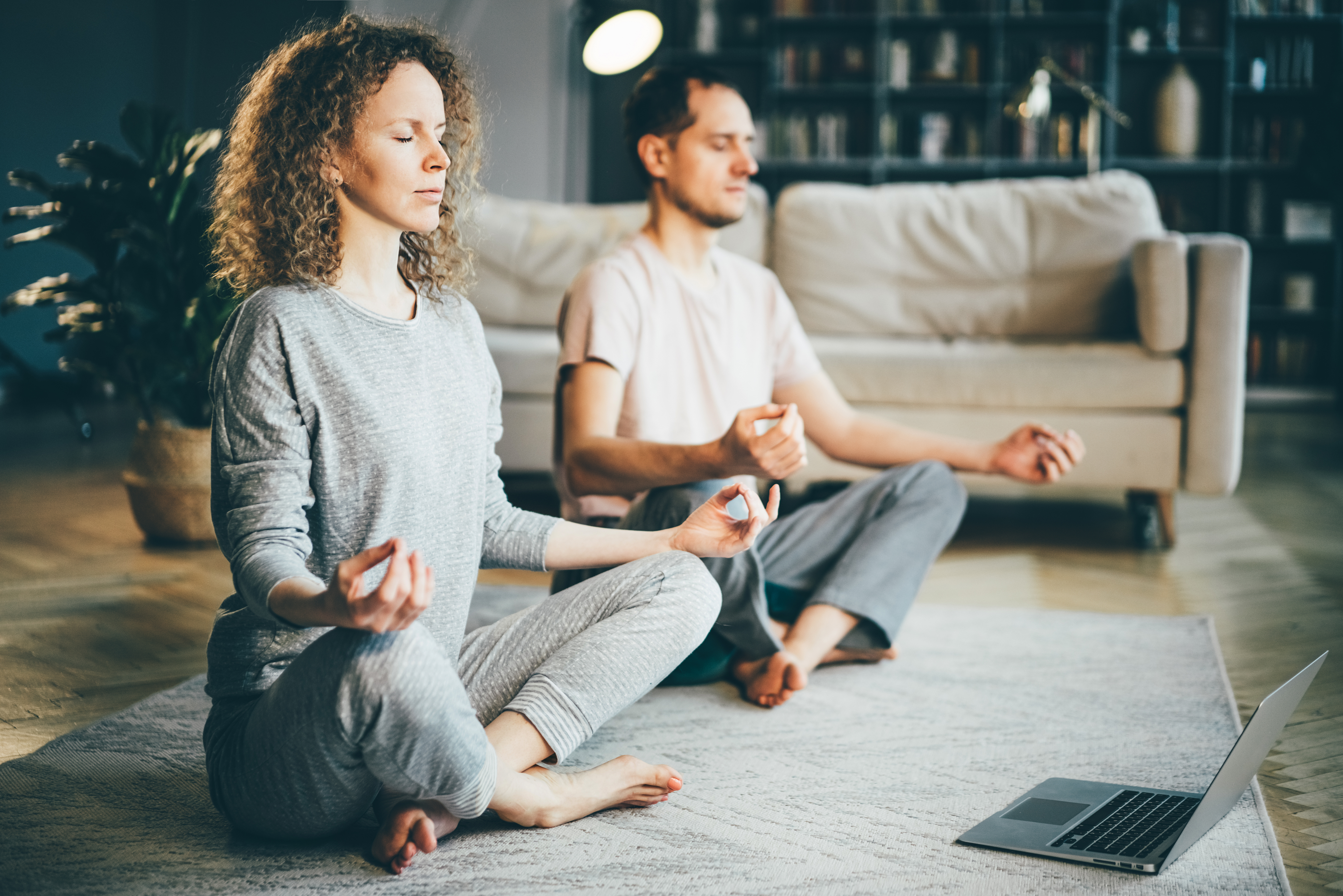Here we are well over a year into the new world order of COVID-19 protection and prevention. For most of us, this means working from home part or all the time. Working from home brings with it a multitude of stressors.
One of these stressors is a wolf in sheep’s clothing.
While providing connection yearned for and necessary during this time of isolation and social distancing, the wolf, virtual meetings, also introduces challenges for our minds and our bodies. These challenges are currently known as Virtual Meeting Fatigue or Zoom Fatigue.
What is Virtual Meeting Fatigue?
According to the journal Technology, Mind and Behavior, Zoom Fatigue is caused by “prolonged video chats [with unprecedented] amounts of close-up eye contact with others and with oneself” (Bailenson, 2021).
Being exposed to other persons’ faces at an extremely close proximity to our own leads our brains to believe we are about to engage in mating or conflict behaviors, which causes a hyper-arousal state. Hyper-arousal then causes release of cortisol, which then, according to WebMD, can shut down or temporarily slow down functions like digestive, reproductive and immune systems.
Over time, these ongoing shutdowns can lead to a plethora of health problems.
“The video conferencing era is [also] creating an increased sedentary lifestyle which has health consequences of its own, contributing to:
- Obesity
- Type 2 diabetes
- Some types of cancer
- Cardiovascular disease
- Early death [and increased depression]”
Peer-reviewed research goes on to show that “when you’re looking at yourself, we scrutinize ourselves, we evaluate ourselves, and this over time causes stress and negative emotions”. “We have seen an increase in the number of surgical cosmetic procedures that people have been seeking directly related to Zoom”, said Dr. Michael Somenek (Baik, 2021)
How to Combat Virtual Meeting Fatigue
So, what shall we do? Meetings are necessary. The show must go on!
Here are a few suggestions which, when implemented, can interrupt these challenging processes’ effects.
The Guardian’s article suggests reducing the size of the video chat and using an external keyboard to allow greater distance from the screen to reduce the arousal state and to reduce self-examination and -criticism.
MedicalNewsToday.com (Ames, 2020) suggests reducing the amount of time you are being sedentary by:
- Standing rather than sitting on public transport
- Walking to work
- Taking walks during lunch breaks
- Setting reminders to stand up every 30 minutes when working at a desk
- Investing in a standing desk or asking the workplace to provide one
- Taking a walk or standing up during coffee or tea breaks
- Spending more time doing chores around the house, especially DIY or gardening
- Making excuses to leave the office or move around the building
- Taking phone calls outside and walking around at the same time
- Spending some free time being active rather than watching television or playing video games
- Getting up and walking around during television commercials
- Taking the stairs instead of using the elevator
For those of us at home (or an office) during work hours, I suggest taking breaks regularly (set an alarm or reminder), stepping outside when possible, taking slow deep breaths for a minute or two, and, if available and appropriate, grabbing a big bear hug or two.
When not working, prioritize “Me” time every single day, even if it’s just 5 to 10 minutes here or there.
A little self-care goes a long way toward optimal mental and physical health.
If you get stuck or are ready to kick it up a notch…Get a Life Coach! You can contact me here at or via email.
Here’s to your Health!






.jpg)

![8 Ideas to Celebrate National Nurses Week [May 6-12, 2023]](https://www.cashort.com/hubfs/8%20Ideas%20to%20Celebrate%20National%20Nurses%20Week%20%5BMay%206-12%2c%202023%5D.png)

SHARE